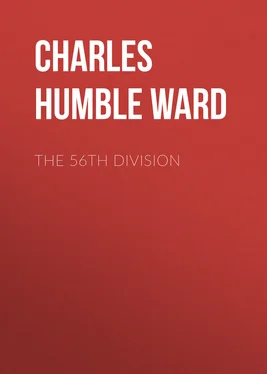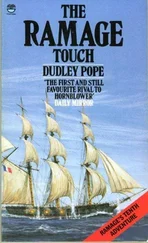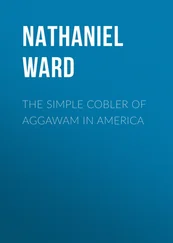Charles Humble Dudley Ward - The 56th Division
Здесь есть возможность читать онлайн «Charles Humble Dudley Ward - The 56th Division» — ознакомительный отрывок электронной книги совершенно бесплатно, а после прочтения отрывка купить полную версию. В некоторых случаях можно слушать аудио, скачать через торрент в формате fb2 и присутствует краткое содержание. Жанр: foreign_prose, История, foreign_edu, foreign_antique, на английском языке. Описание произведения, (предисловие) а так же отзывы посетителей доступны на портале библиотеки ЛибКат.
- Название:The 56th Division
- Автор:
- Жанр:
- Год:неизвестен
- ISBN:нет данных
- Рейтинг книги:5 / 5. Голосов: 1
-
Избранное:Добавить в избранное
- Отзывы:
-
Ваша оценка:
- 100
- 1
- 2
- 3
- 4
- 5
The 56th Division: краткое содержание, описание и аннотация
Предлагаем к чтению аннотацию, описание, краткое содержание или предисловие (зависит от того, что написал сам автор книги «The 56th Division»). Если вы не нашли необходимую информацию о книге — напишите в комментариях, мы постараемся отыскать её.
The 56th Division — читать онлайн ознакомительный отрывок
Ниже представлен текст книги, разбитый по страницам. Система сохранения места последней прочитанной страницы, позволяет с удобством читать онлайн бесплатно книгу «The 56th Division», без необходимости каждый раз заново искать на чём Вы остановились. Поставьте закладку, и сможете в любой момент перейти на страницу, на которой закончили чтение.
Интервал:
Закладка:
Although the trench was dug in one night, the whole operation required three nights to complete. On the first night, the 25-26th May, covering parties crept out and took up positions in advance of the selected line. Then engineers followed, quiet and certain in all that they did, and marked out the line with string and pegs. On the left they got to work speedily: the pegs were about nine inches long and made from small round stakes from which the bark had not been removed; the string was ordinary jute twine which had been prepared with loops at the proper intervals to mark the angle of bays and traverses. They were undisturbed, and C and D sections were marked out.
But in A and B sections the night was one of excursions and alarms. First of all there was great difficulty in getting the covering party through our own wire, which suggests an unfortunate oversight; and then German patrols were encountered. The latter occurrence was a contingency which had always been reckoned with. A game of hide and seek ensued, but meanwhile time passed. There was no question of clearing No Man’s Land when other parties were working on the left, and so the marking had to be abandoned. It did not, however, cause any serious inconvenience.
The next night each battalion marched from billets fully armed for digging. Ten per cent. carried picks, and the remainder carried shovels which had been carefully sharpened. Each man had three sandbags, one being wrapped round the shovel or pick to prevent noise, and between them they also carried a quantity of white tape.
In the line ten exits had been made by cutting through our wire and constructing steps out of the trench—trench ladders had also been provided by the engineers in case the steps should be impassable through rain. White boards were hung on the wire to mark these gaps for the withdrawal.
The communication trenches to be used by the working battalions were left quite clear by the troops holding the line, and, at the appointed time, the head of each battalion was at the selected entrance and advanced in the following order: covering parties, taping parties, working parties.
The covering parties, consisting of sixty officers and men in six groups, had orders to use rifle fire as sparingly as possible, but to make full use of the bayonet if enemy patrols were encountered.
When the covering parties had been given time to get out, the two other groups of parties followed at short intervals. And half an hour after the digging parties had left the trench, wiring and carrying parties, about a hundred men to each battalion, went out. There were three thousand men in No Man’s Land!
The boldness of Gen. Hull’s enterprise was amply justified. By 2.30 a.m. the trench had been made and was held by posts, found from the covering parties, reinforced with Lewis guns; they had rations, water, and shovels to improve their positions, and were in telephonic communication with the old trench, and all the working parties had filed away as silently as they had come.
During the ensuing day the Royal Flying Corps successfully prevented any enemy aeroplanes from approaching our lines, but our airmen photographed the new line themselves, and at noon Gen. Hull was able to see from a photograph what work had been done.
On the night of 27-28th the same number of men were out working again, improving the front-line trench and wire, digging support lines and two other communication trenches. The new work had been pegged out the previous night by the engineers.
The 56th Division had then started its career with the astounding feat of having in the space of forty-eight hours constructed and wired a new system of trenches, comprising 2,900 yards of fire trench and 1,500 yards of communication trenches, in No Man’s Land and within 250 yards of the enemy. Casualties were 8 killed and 55 wounded. A little luck had waited on audacity, but the success of the whole operation was undoubtedly due to the intelligence and keenness of the men. They had nothing much to help them. Gen. Hull had, indeed, ordered two or three wagons, loaded with empty shell-cases and biscuit tins, to drive up and down the roads in rear of his lines, and the artillery fired an occasional round from a howitzer as a means of distracting the attention of the enemy, but it only required one foolish man to lose his head and disaster would have descended on the whole brigade.
It is interesting to note the dress. The covering parties were in full fighting kit and carried one day’s ration; the taping, digging, and wiring men had no equipment, but carried a rifle, loaded with ten rounds, and one bandolier; the wire-carrying party had no arms or equipment.
The first stage was over. There was, however, still an enormous lot of work to be done—the trenches had to be improved, deepened, revetted, emplacements had to be made for machine guns and trench mortars, stores for ammunition of all sorts had to be constructed, cables had to be buried—it is but a repetition of what was going on everywhere on that front.
Gen. Hull and his G.S.O.1, Lieut.-Col. J. E. S. Brind, an artilleryman, were considering the problem of attack. The main features of it are noted by Gen. Hull as follows:
( a ) The village of Hébuterne, which affords concealment from view to within a short distance of our present line and good observation of the German positions between Gommecourt and the spur north of the sunken road (K17a and b) on the right of the divisional front.
( b ) The valleys west of Hébuterne, which afford good artillery positions and cover from view, except from the trees in Gommecourt Park.
( c ) The spur running eastward from Hébuterne just north of the Hébuterne-Puisieux Road, which defilades the area, north of the spur, from the German trenches, south of the spur.
( d ) Gommecourt Park and village, which, to a certain extent, dominate the ground to the south.
( e ) The spur running from E29c (north-east of Gommecourt) through K5a and b to the Rossignol Wood along the southern portion of which spur runs the German fourth line.
This spur commands the eastern edge of Gommecourt, dominates the German trench system south-east and south of Gommecourt, and affords concealment, both for battery positions in the valley to the east and for a covered means of approach for a counter-attack against the captors of Gommecourt.
( f ) The valley south-east of Nameless Farm, in which runs the Puisieux-Gommecourt Road, a line of approach covered from view from our present line.
It was once asked after a severe action for the capture of some rising ground, “What is the use of turning Fritz off a hill? There is always another hill behind it.” Which was true enough. But it is as well to remember that the high ground to the left as far as Blairville, held at this date by the Germans, was in 1918 in our hands, and it enabled Sir Douglas Haig to turn the whole of the old Somme position.
Of the German line Gen. Hull says:
“The German position south-east of Gommecourt Park and village consists of three lines of trenches, of which the first is heavily wired, the second lightly wired, the third does not appear to be wired at all unless there is sunken wire on the road. All three lines are visible from our present position except the second and third lines behind the strong point K11c and d. The northern flank of this system of trenches rests on the southern edge of Gommecourt Park, the trenches along which are organised to fire south. The southern flank of the system rests on the strong point K11c.
In rear of this system is another consisting of two lines of trenches running from the south-east corner of Gommecourt along the ridge in 5Ka, b, and c, to Rossignol Wood. The front trench of this system is heavily wired and visible.”
Читать дальшеИнтервал:
Закладка:
Похожие книги на «The 56th Division»
Представляем Вашему вниманию похожие книги на «The 56th Division» списком для выбора. Мы отобрали схожую по названию и смыслу литературу в надежде предоставить читателям больше вариантов отыскать новые, интересные, ещё непрочитанные произведения.
Обсуждение, отзывы о книге «The 56th Division» и просто собственные мнения читателей. Оставьте ваши комментарии, напишите, что Вы думаете о произведении, его смысле или главных героях. Укажите что конкретно понравилось, а что нет, и почему Вы так считаете.




![Александр Ирвин - Tom Clancy’s The Division 2. Фальшивый рассвет [litres]](/books/417744/aleksandr-irvin-tom-clancy-s-the-division-2-falsh-thumb.webp)







